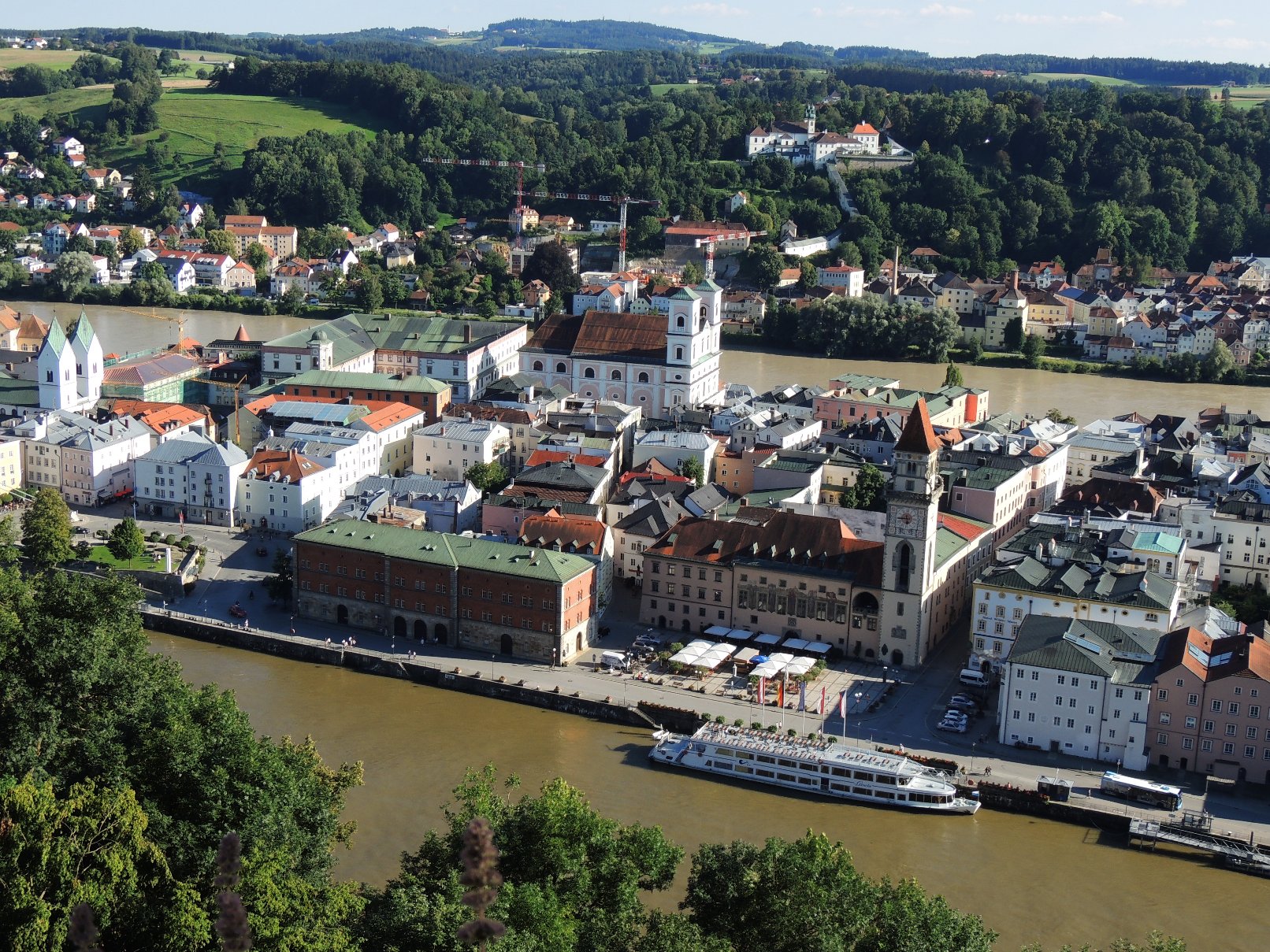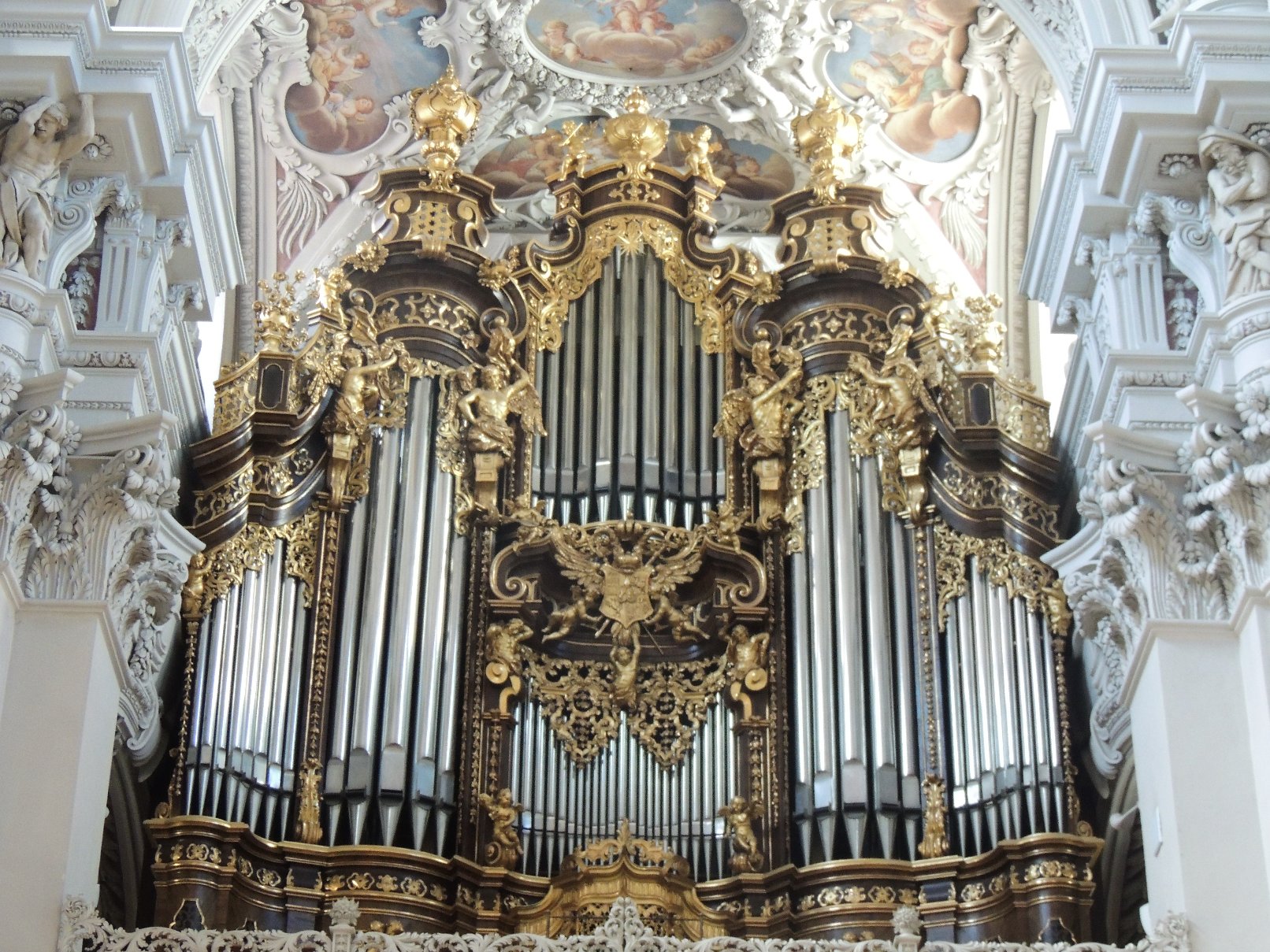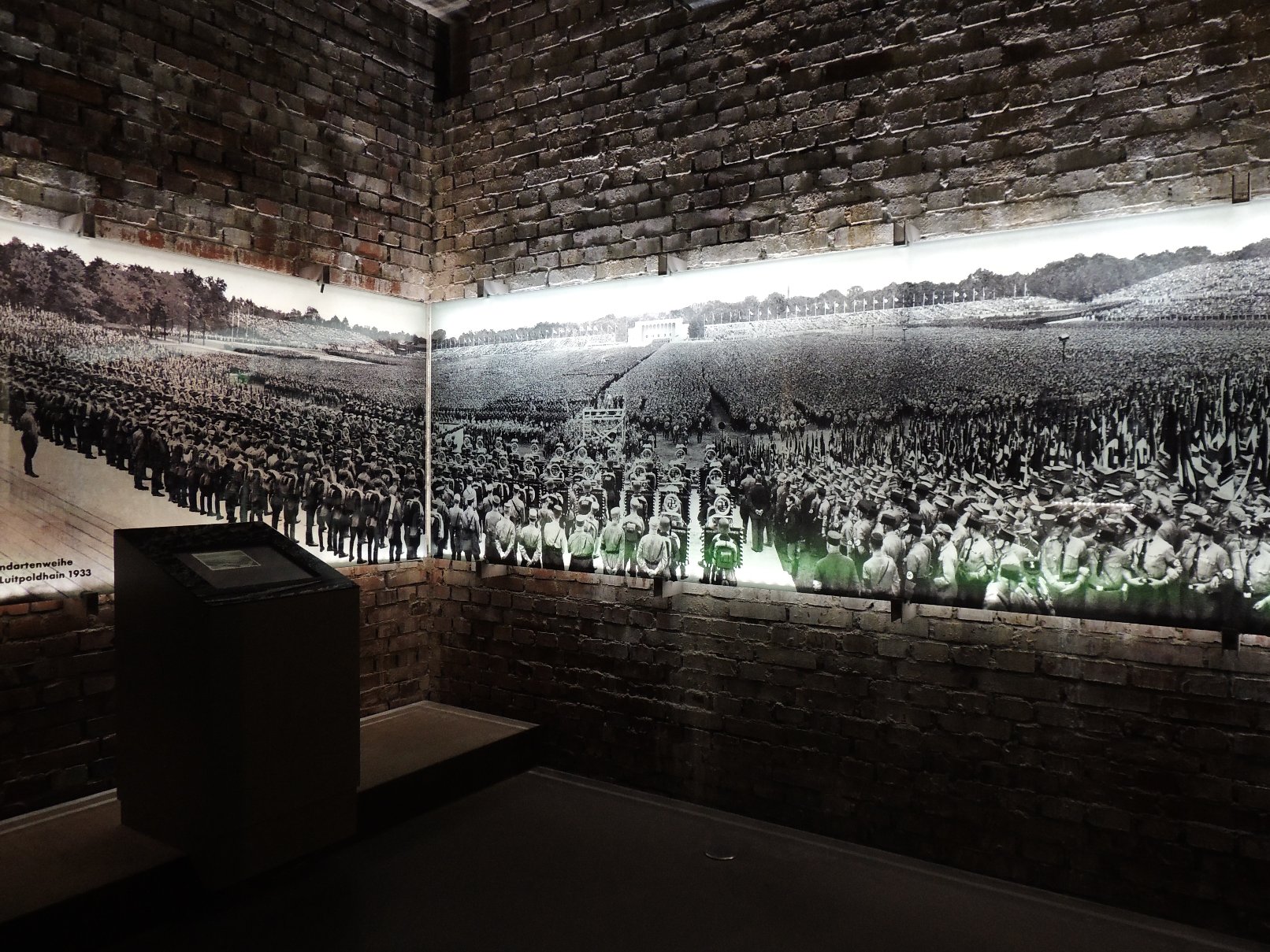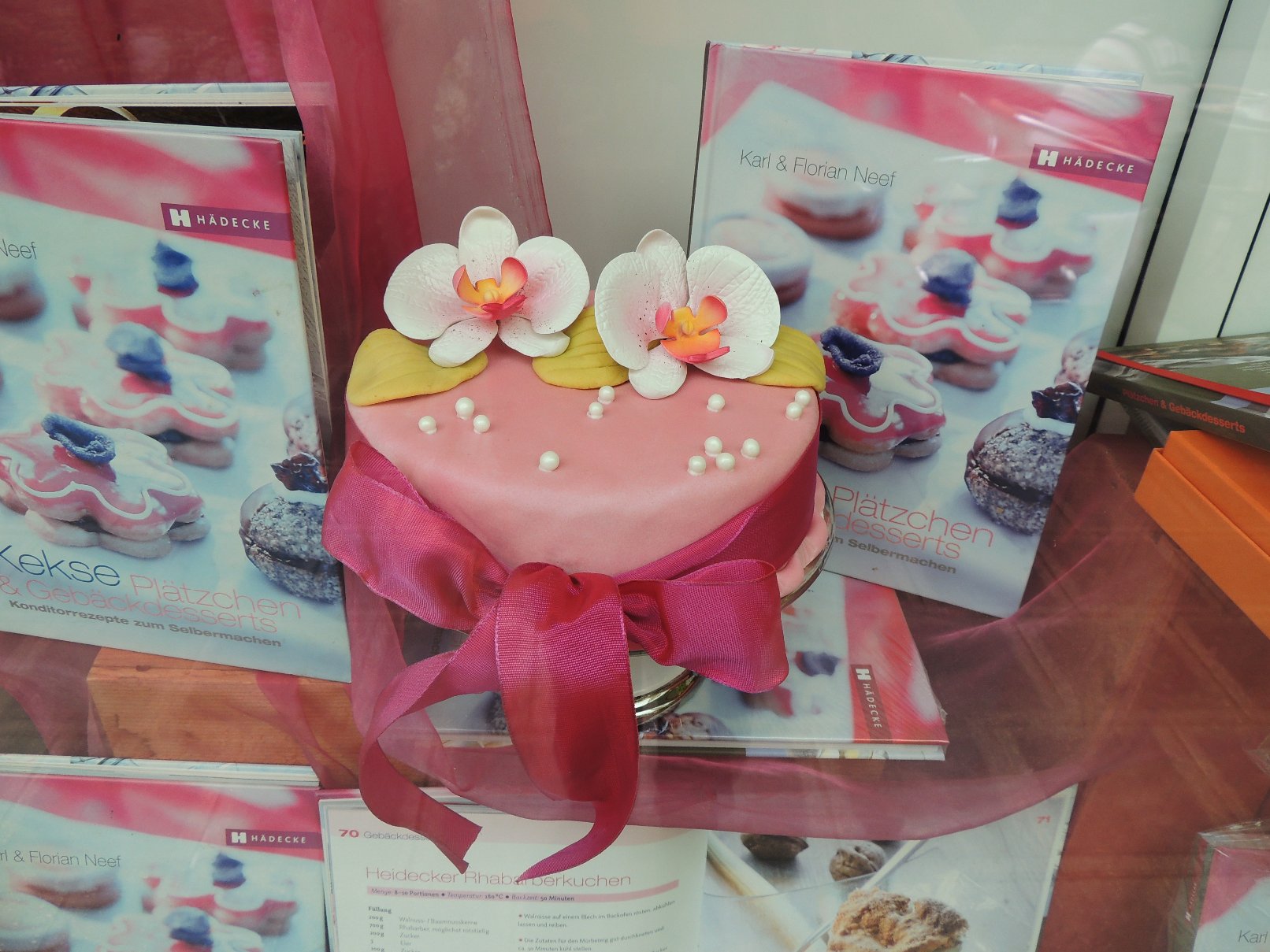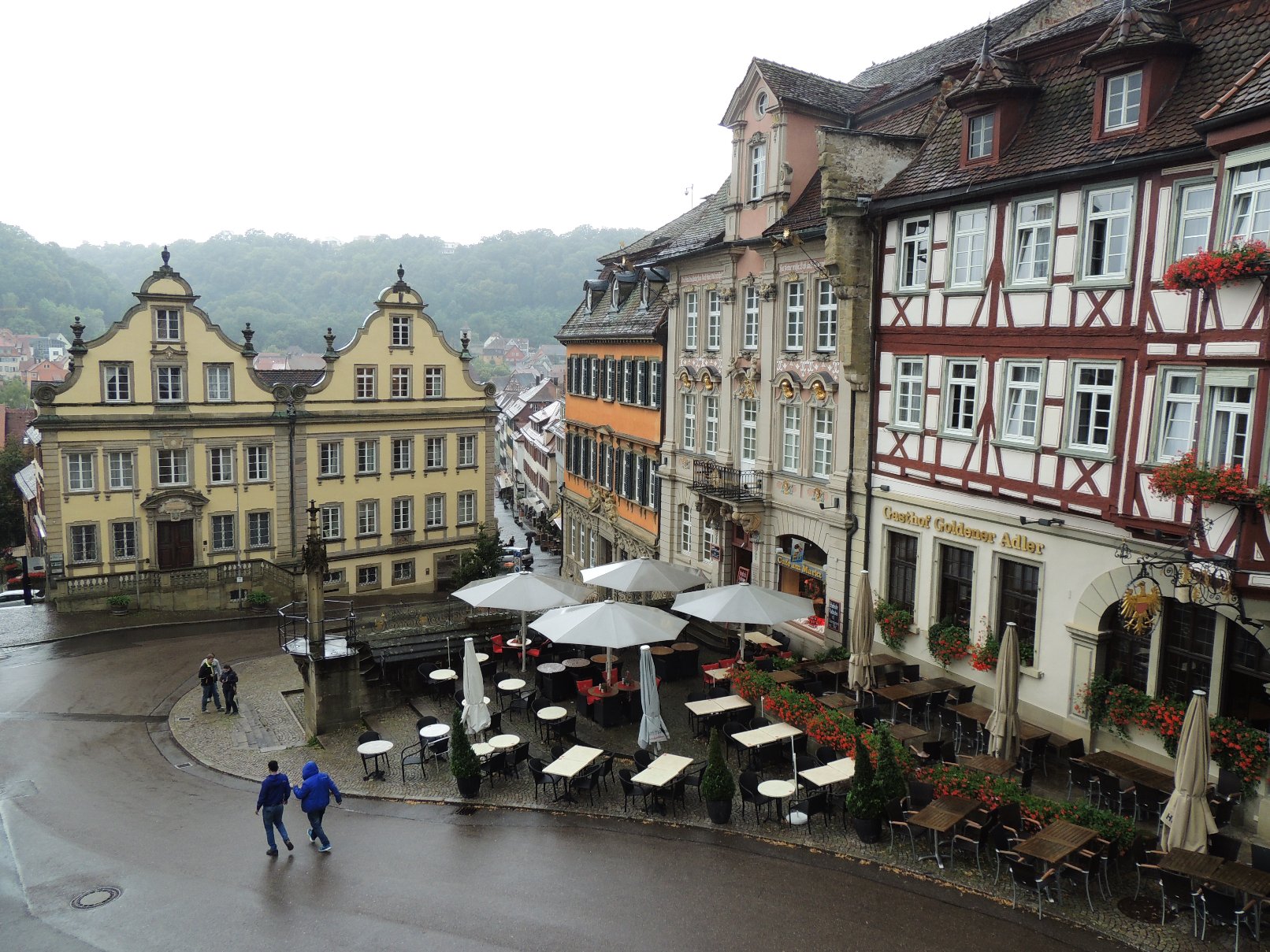German Plum Sheet Cake
After 22 hours in the air from Melbourne, we arrived in Munich for an extended European visit. Our German friends – who had visited us in Australia one year earlier – were there to meet us at the airport. It was midday but we weren’t ready for lunch then.
One and a half hours later we were at their home in Passau, in lower Bavaria, south-east Germany.
They settled us on their balcony that looks out over farmland and the Bavarian Forest. There we were presented with a large pot of coffee – to keep us awake – and a magnificent tray of plum cake called Zwetschkendatschi. (It comes under slightly different names in other parts of Germany and in Austria and Switzerland, where it is also a regional favourite.) It was cooked on a large, shallow, baking sheet that seemed to be about 40cm square. The pastry was made from their home-ground spelt flour with egg and butter, but little sugar. The plums are the local variety called zwetschgen, which were in season.
We didn’t think to photograph the cake at that point, however, here is a photo of the cake from one of the cookbooks by the owners of Confiserie Neef in Nuremberg.
The red-purple plums are medium to small size, with a pointy end. Our friends had a ‘device’ for de-pipping the plums and cutting them into quarters with one action – we later bought one. The quartered plums are layered thickly over the thin layer of pastry, then sprinkled with a little sugar, then baked.
Our friends had used no sugar with the plums and the taste was a revelation: we were eating a cake that was both sour and mouth-watering! Some cold, Greek-style yoghurt served with it brought out the flavours even further.
We would often see zwetschgen over the next week: on the trees, for sale in the markets and in supermarkets, and atop cakes, pies and tarts in the Konfiserie and Konditorei.
Passau is also known as the Town of Three Rivers, being located on the Danube just where it meets the Inn River from Austria to the south and the Ilz from the north. It features many Italian-style buildings that are centuries old and its gorgeous baroque cathedral from 1688 houses the world’s largest cathedral organ. A dominant feature of Passau these days is the large number of cruise ships that pass through as they ply the Rhine and Danube rivers between Amsterdam and the Black Sea.
After Passau we would visit other gorgeous towns in Bavaria, in particular, Regensburg, Bamberg and Nuremburg.
Nuremburg was the site of the Nazi Party conventions where huge rallies were held in the 1920s and 30s. There is now a fascinating museum in the remaining main rally building.
Back in the city centre, the Nuremberg of the 21st Century is prosperous and cosmopolitan but with many glimpses of history and tradition. It was there that we came across Confiserie Neef, with wonderful displays of baked sweets, a painting that looked out over the diners and their cookbook featuring their version of Zwetschkendatschi. It was then that we decided we must make one of these plum cakes, and as soon as possible.
However, it would be several days later, after having travelled though other beautiful southern German towns like Weikersheim, Schwabisch Hall (next photo) and Constance, before we had the chance!
Continued in Europe 2016 – Part 2.




